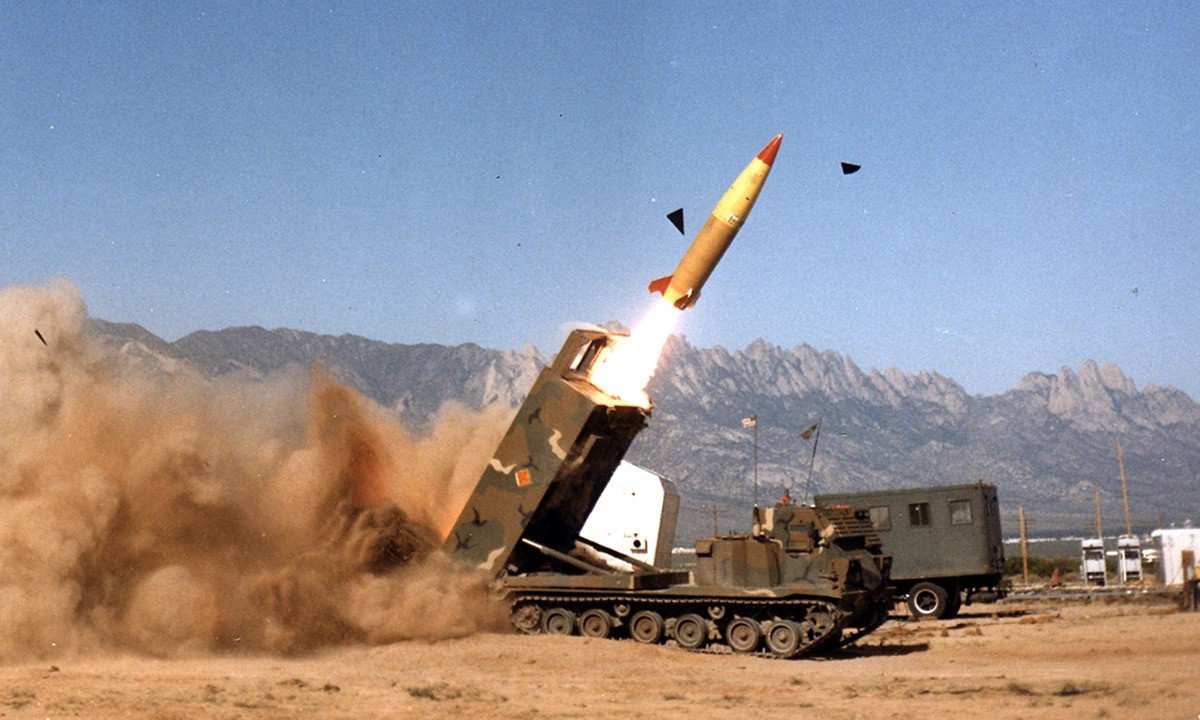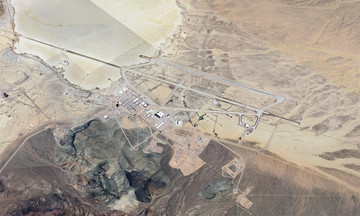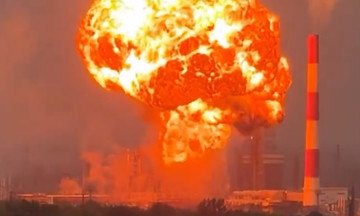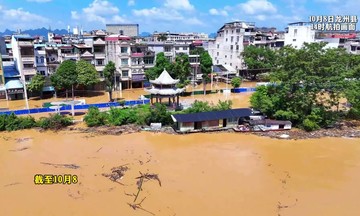The Wall Street Journal revealed last week that US officials have quietly implemented a review process, empowering Secretary of Defense Pete Hegseth to approve all Ukrainian ATACMS ballistic missile strikes against Russian territory.
This process, in place since the middle of this year, has prevented Kyiv from using ATACMS to target locations deep within Russia. It also restricts Ukraine's independent use of British and French Storm Shadow/SCALP-EG missiles, which rely on US-provided data.
This appears to be an attempt by the Trump administration to ensure peace talks aren't disrupted by Ukrainian missile strikes deep inside Russia. However, experts believe this measure is becoming less effective, especially as the Ukrainian military continues to target Russian oil infrastructure.
 |
An ATACMS ballistic missile launch in a photo posted in 3/2023. Photo: USAASC |
An ATACMS ballistic missile launch in a photo posted in 3/2023. Photo: USAASC
"The impact of ATACMS or Storm Shadow missiles on the war shouldn't be overstated, particularly as Ukraine ramps up its domestic defense industry," commented Audrey MacAlpine of the Telegraph.
When the Biden administration lifted restrictions on Ukrainian ATACMS strikes against Russian territory late last year, Moscow had already relocated most of its logistics and aircraft beyond the missiles' 300 km range.
However, this doesn't render ATACMS useless. Admiral Rob Bauer, former chairman of the NATO Military Committee, stated that these missiles have inflicted significant damage on some Russian arms factories and ammunition depots.
The main issue is Kyiv's limited missile supply. The US delivered about 500 ATACMS missiles to Ukraine starting in 10/2023, but Kyiv had only about 50 left when the Biden administration lifted the restrictions, according to unnamed US officials. Ukraine's Storm Shadow stockpile has also significantly decreased from its initial 100-200.
Both the US and UK face difficulties providing more of these missiles due to low stockpiles.
Meanwhile, modern Russian air defense systems can intercept ATACMS and Storm Shadow missiles if deployed effectively. After the Biden administration lifted the ban, Russia significantly reinforced its defenses, reducing the missiles' effectiveness.
"Ukraine undoubtedly still desires unrestricted use of ATACMS, especially with Russia's summer offensive underway. Any strikes against Russian logistical hubs supporting operations in Donbass are welcome," said MacAlpine.
Despite the Trump administration's restrictions, Ukraine hasn't lost its long-range strike capability against Russia. It frequently uses long-range unmanned aerial vehicles (UAVs) for this purpose.
An oil depot in Sochi, Russia, burns after a Ukrainian UAV attack on the morning of 3/8. Video: X/Exilenova_plus
"Ukraine is intensifying its deep strikes into Russia, and the US restrictions don't seem to be a major issue. Since taking office, the Trump administration has consistently overestimated its influence over Ukraine," stated Anders Puck Nielsen, an analyst at the Danish Defence Academy.
However, Ukrainian long-range UAVs have limited destructive power and are easily intercepted. This is why Ukraine is actively developing domestic long-range missiles, most recently the Flamingo, expected to be deployed this year.
Advertised with a range of up to 3,000 km and a nearly 1.2-ton warhead, the Flamingo could threaten targets across central Russia, including Moscow and St. Petersburg, and even parts of Siberia.
"The jet engine gives the missile high speed and survivability when flying deep into enemy territory, especially compared to converted light aircraft and previous long-range UAVs. The large warhead and high velocity also allow it to penetrate hardened structures, expanding the target list," commented Joseph Trevithick of the US military website War Zone.
Compared to Storm Shadow and ATACMS, the Flamingo is less stealthy and slower, making it more susceptible to interception. The key difference is Ukraine's control over its use and production, reducing reliance on external support.
 |
Flamingo missiles at the Fire Point factory on 18/8. Photo: AP |
Flamingo missiles at the Fire Point factory on 18/8. Photo: AP
Fire Point, the Flamingo's developer, says it's currently producing about one missile per day and aims to increase production sevenfold by October, exceeding 2,500 missiles annually. "If Ukraine produces enough Flamingos, the next phase of the war will become much harsher for Russia," said MacAlpine.
Ukraine also recently unveiled an upgraded version of the R-360 Neptune missile, used to sink the flagship Moskva. Called "Neptune Extended Range," this version reportedly has a 1,000 km range, three times that of ATACMS.
Weapons like the Flamingo and Neptune Extended Range are believed to be the reason President Volodymyr Zelensky declared on 24/8 that Ukraine has achieved self-sufficiency in long-range strikes and no longer needs US approval for attacks deep within Russia. "We are using long-range weapons produced by Ukraine and haven't consulted with the US on this topic recently," he said.
Pham Giang (Telegraph, War Zone, WSJ)












